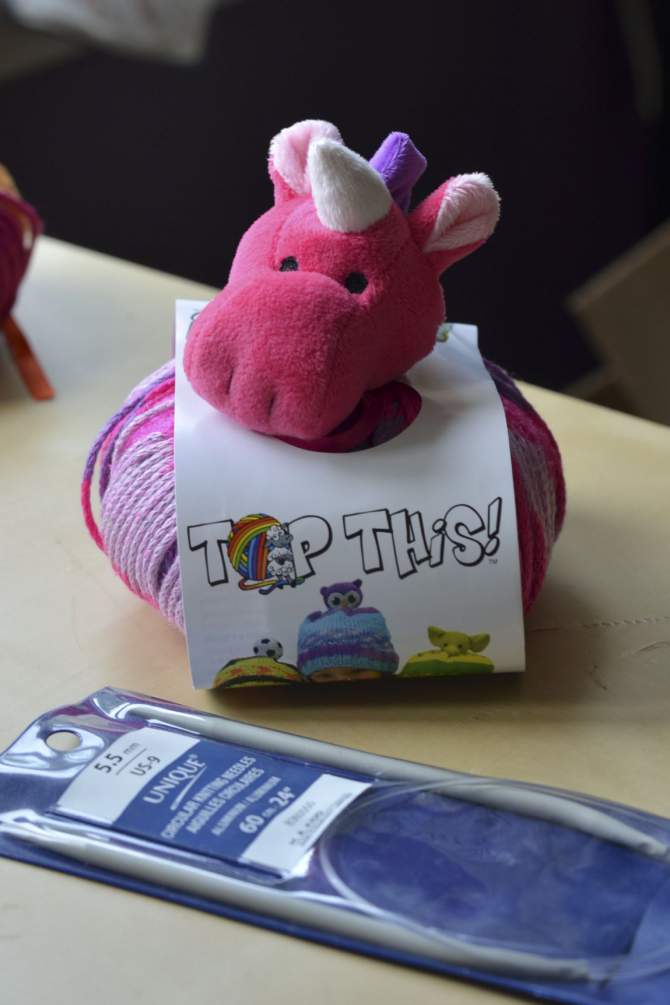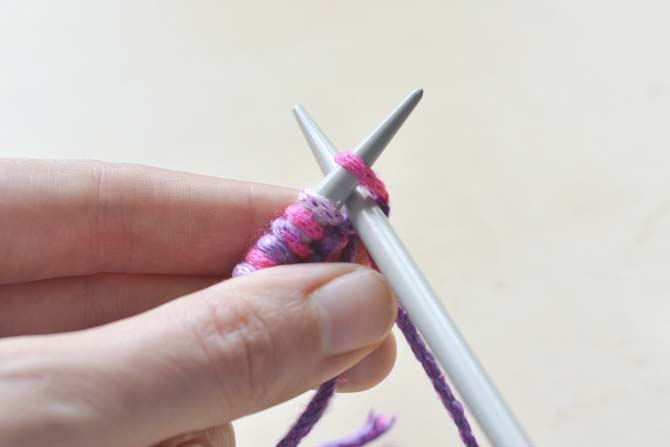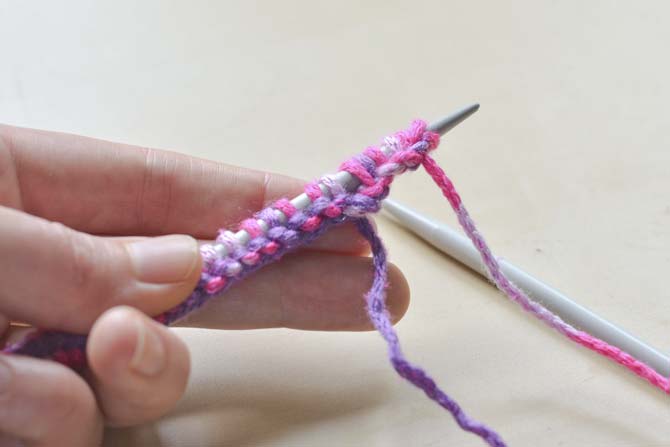In yesterday’s post, we demonstrated an alternative longtail cast on using two hands, which can be a simpler way to learn this cast on if the traditional method using one hand feels confusing at first. It’s also an easier way for young knitters with smaller hands to learn the longtail cast on. The longtail cast on is very versatile, and many knitters will tell you it’s the one they use for almost all of their knitting projects! However, one of the most common challenges is estimating how long to make the “tail” – the length of yarn used alongside the working yarn. Today we’re going to look at several options for measuring yarn for your longtail cast on, highlighting 1 tip when your longtail cast on isn’t long enough!

We’d hate to leave this adorable gal hanging with a too-short cast on!

Running out of yarn for the long tail is a common challenge with longtail cast on!
First, know that this is a challenge shared by a lot of knitters! Those of us that adore longtail cast on know all too well the feeling of getting almost to the end of the cast on and running short on the tail yarn, with just eight or ten stitches left to go. It seems we end up with either far too much yarn or not enough. A common recommendation is to estimate three times the length of the edge you will be making, or using two separate lengths of yarn.
If you’re short by only a few stitches, though, the easiest solution is to switch to the cable cast on (or knitted cast on), and add the remaining number of stitches you will need. Below, I demonstrate adding stitches this way, to add six more stitches to the longtail cast on I used for my Top This hat.

Cable cast on to the rescue! Remember how this goes?

Cable cast on: make a new stitch between the last two on the left hand needle.

Cable cast on: place the new stitch on left hand needle, through the front of the stitch.
Remember our cable cast on tips from last month, as shown above also:
Insert your right hand needle between the two stitches at the end of the left hand needle. Wrap the yarn around the right hand needle and pull the new stitch through. Turn the stitch to place it on the right hand needle through the front of the stitch.
Repeat these steps as many times as you need to! However, this method is only recommended for small numbers of extra stitches. If you’ve run out and still need more than just an inch or two of stitches, it’s better to simply re-cast-on with a longer tail, since there will be a difference in the appearance of the cast on edge at that point.

Add a few more stitches to the end of your cast on row by using cable cast on.
One final TIP for this solution: When you’re knitting your first row (or round), you may want to knit those cable cast on stitches through the back loop (rather than through the front loop, like a normal knit stitch). This is because those stitches will be a little looser on the needle than the longtail cast on ones, and knitting through the back loop will make them tighter.
The longtail cast on is so versatile but figuring out how long to make the tail can sometimes feel like a lifelong quest. As long as you have a bit of extra yarn to spare, ending up with too long a tail isn’t too much of a worry, and using the cable cast on is a great solution when your longtail cast on isn’t long enough!
